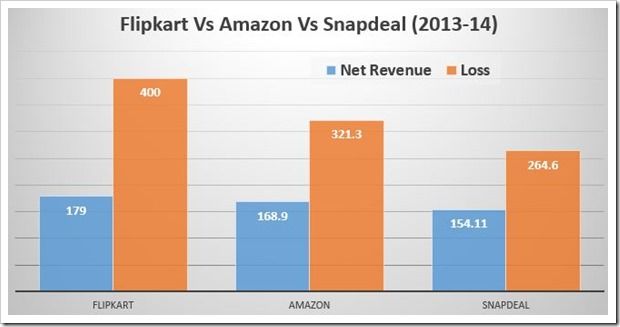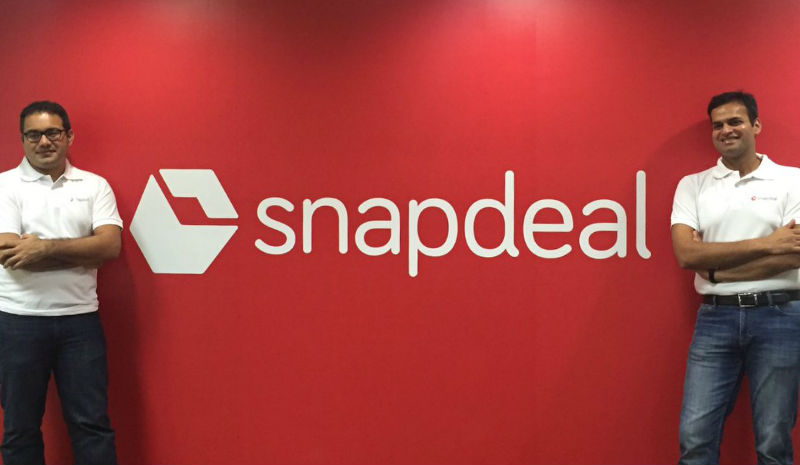Snapdeal was founded by Kunal Bahl and Rohit Bansal in the year 2010, and by 2011, it has expanded to the widespread e-commerce platform. The company faced competition with another homegrown firm Flipkart. But with the advent of Amazon in India in2012, the dark clouds loomed large on this brand. The founders dealt with a failed attempt to merge with its competitor Flipkart but ultimately decided not to give up. The founders, quite contrary to the founders of Foodpanda, pulled themselves up with positive cash flow and a healthy balance sheet. They coined Snapdeal 2.0 to deal with the value merchandise, logistics and payment business.

As per the interview of the founders with Economic Times in the year 2018, “Our volumes have grown about 2.5 times since last July. In June this year, we became cash positive as a company. There has been a 100% reduction in cash burn. We are now at a point where the morale of the team is at an all-time high because of the clarity of our course, clarity of focus, and the success our team has seen. It was an excruciating 18 months, to say the least. But at the end of it, we are at a very good place as a company and the business has completely turned around.” Snapdeal changed their logo, colour and design, made other changes before re-launching themselves as better and new avatar. The tagline “Unbox Zindagi” is catchy and has successfully grabbed the attention of the consumers.

Source: Wikipedia.

Source: DNA India.
The founders took care of the business models, work culture, the morale of the employees, and the business growth was imminent. Snapdeal concentrated on the price-sensitive consumer base of the country. The company managed to sell products, ranging between $5 to $10, maintaining its profit margins by reforming the supply-chain requirements and logistics. While the other companies try hard to extract profit selling products below $10, Snapdeal does that easily with their strategic business procedures. Some of the important steps that the company took to retrieve themselves from the mess are: uplifting the employee morale and work culture, motivating the employees, targeting the price-sensitive consumers who prefer good quality products that may or may not branded, innovative approach towards eCommerce, changes made to their site, changing from “search” option to “browse” option and selling off the unprofitable assets.
Snapdeal targeted its users, and many of its consumers are from semi-urban areas as well. Whereas the other eCommerce platforms are designed along with the Western platforms, Snapdeal kept in mind the Indian mentality. Here, the majority of the population is hailing from the rural and semi-urban areas, the per capita income is much less than that of the west. So, the company targeted the users, who are looking for products with less pocket pinch; even if they are not browsing anything, they can play games and win coupons. This way the company built a strong connection with their consumer base.
The flash sales of mobiles and electronics will be a very clichéd one, and many have walked along this path. So, Snapdeal rather chose the road not taken. It listed those categories which a customer would have purchased offline. It targeted a segment that was less explored. It on-boarded the sellers at minimum cost and thus optimizing the operating efficiency of the marketplace and adoption of lean operations model. In the last two years, Snapdeal has 60,000 new seller partners, who have added above 50 million new listings.
According to Kunal Bahl, “Our transacting customers grew 2.2X and traffic surged 2.3X to 70 million unique users per month. And all this in a year when e-commerce companies in India burnt through $2.5 billion in the pursuit of growth.” He also added “The doubling of our orders in the last one year is actually a two-fold increase in the business of the seller partners on our platform, the majority of who are small businesses. Each and every order that is fulfilled on Snapdeal is by independent, third-party seller partners.” The company has achieved profit by reaching to the users seamlessly, and out of them 80% users are hailing from small towns and cities.
The loss of the company reduced from Rs 611 crores in 2018 to Rs 186 crores in 2019. The company could manage 71% loss aversion, thus triggering its mark to the top. The revenue of the company increased from Rs 535.9 crores of 2018 to Rs 925.3 crores in 2019. The company’s success can teach some valuable lessons to us.

Source: TechStory
- Focus on the goal: The goal of any business is the first thing that must be set. In this case, Snapdeal’s goal was to increase revenue, reduce loss and cash burn. It targeted segments that are less explored and started functioning in a lean business model with 750 employees. Snapdeal is working at a smaller scale in comparison to giants like Amazon. It does not want to compete, it just sets its target users and caters their needs in seamless procedures.
- Work culture and employee ethics are essential: The organizational communication that was lacking in big firms like Nokia and Kodak is not the case with this Indian eCommerce platform. The employees are well connected here, they are all aware of the quantitative and qualitative vision of the company and work for the same. A united organization with happy employees can help in business expansion, as believed by the founders of Snapdeal.
- In-depth market research will give you an insight: Snapdeal is well aware of its completion, the changing market dynamics, internet explosion and the booming digitization. Seamless user experiences, cost-efficient good quality products and convenient payment options are all provided by the company. Efficient B2C marketing strategies aid in the turnaround of this online retail platform.
Snapdeal was once running under huge losses and was overshadowed by the fellow competitors. But within a year, it turned its head around towards success and the story is all in front of us. Not all can pull themselves up, like Snapdeal, say for example Indiaplaza. The founders of Snapdeal are benevolent and transparent enough to share their journey with us all. Mistakes and failures are great teachers, but wouldn’t be great if you can avoid them on time?
Google will give you hundreds of websites, but an expert will guide you thoroughly in your journey. Do you want to talk to experts in detail? Talk to our niche skilled experts now to know the diverse competitive market in greater detail! We at Vedak have an exclusive pool of experienced industry professionals and veterans who have in-depth knowledge about the business nitty-gritty. Contact us to know more.

